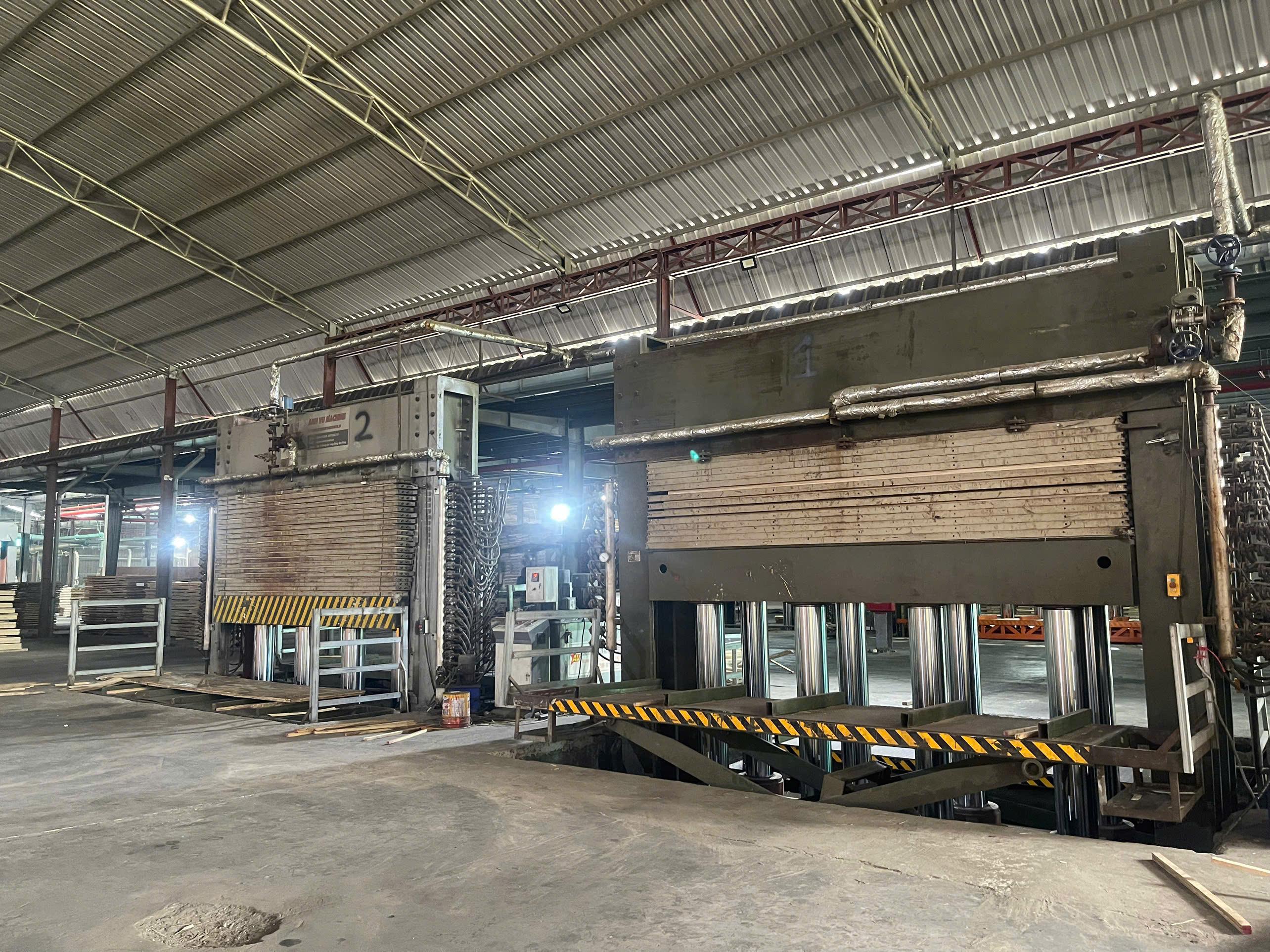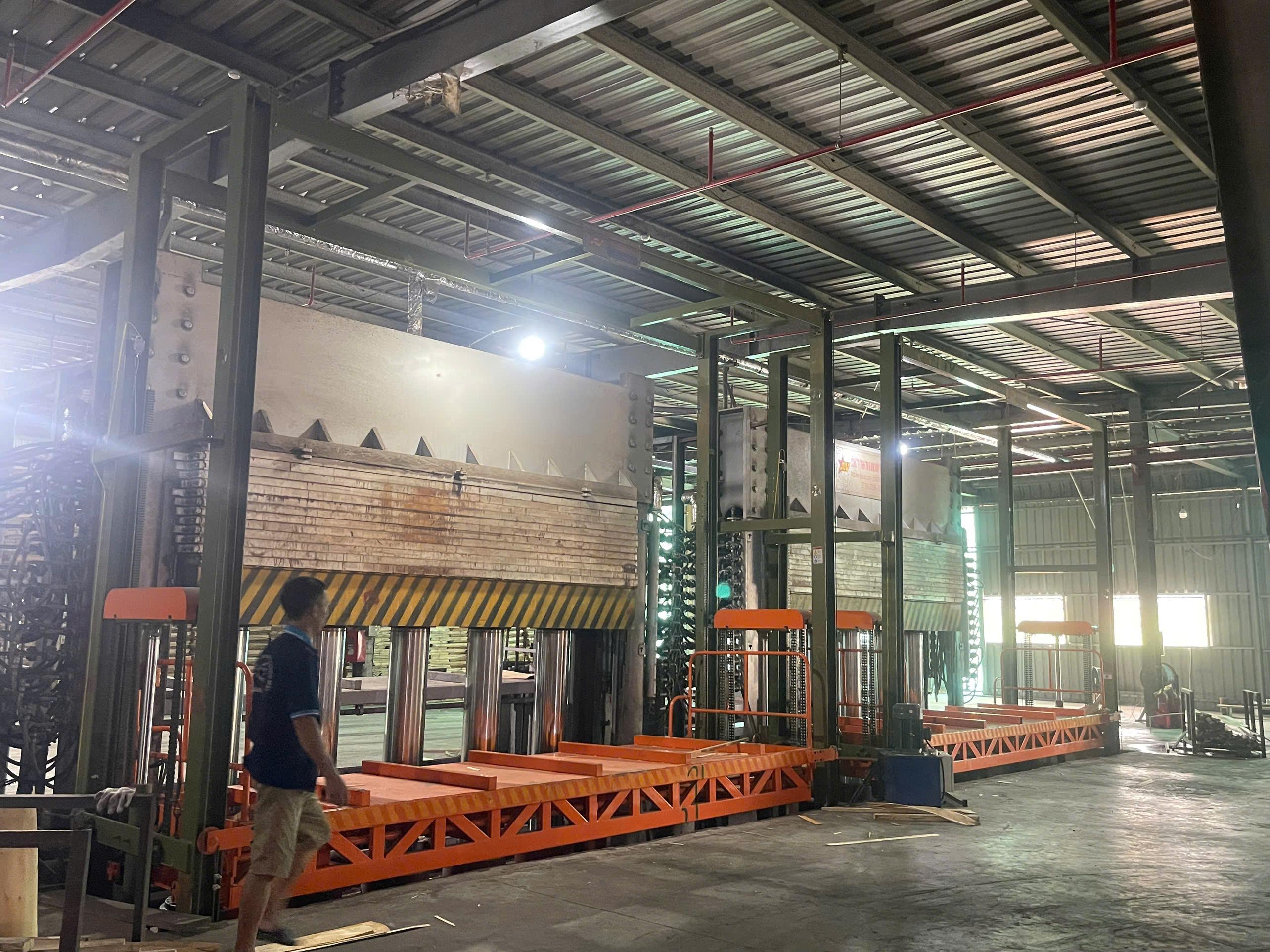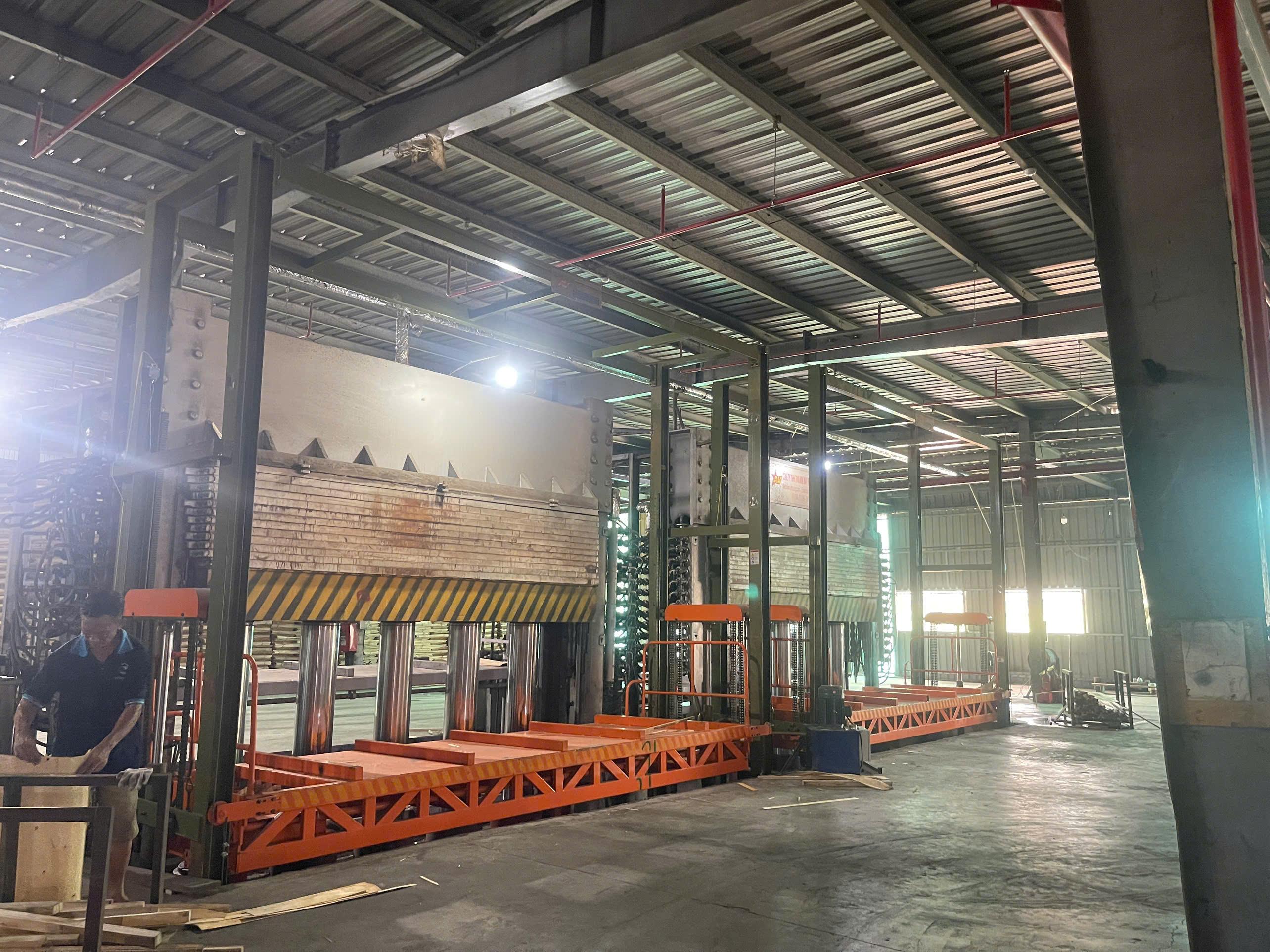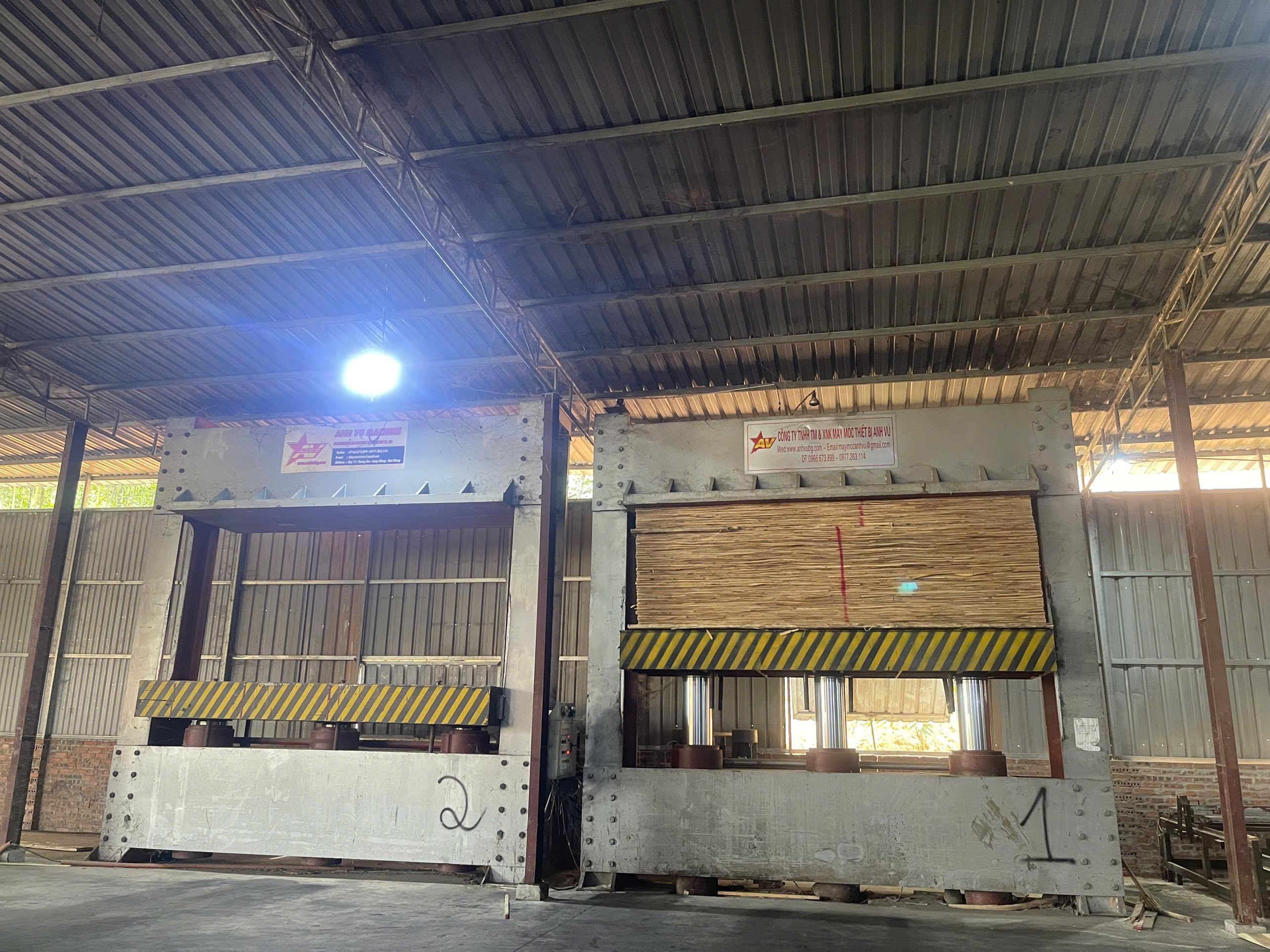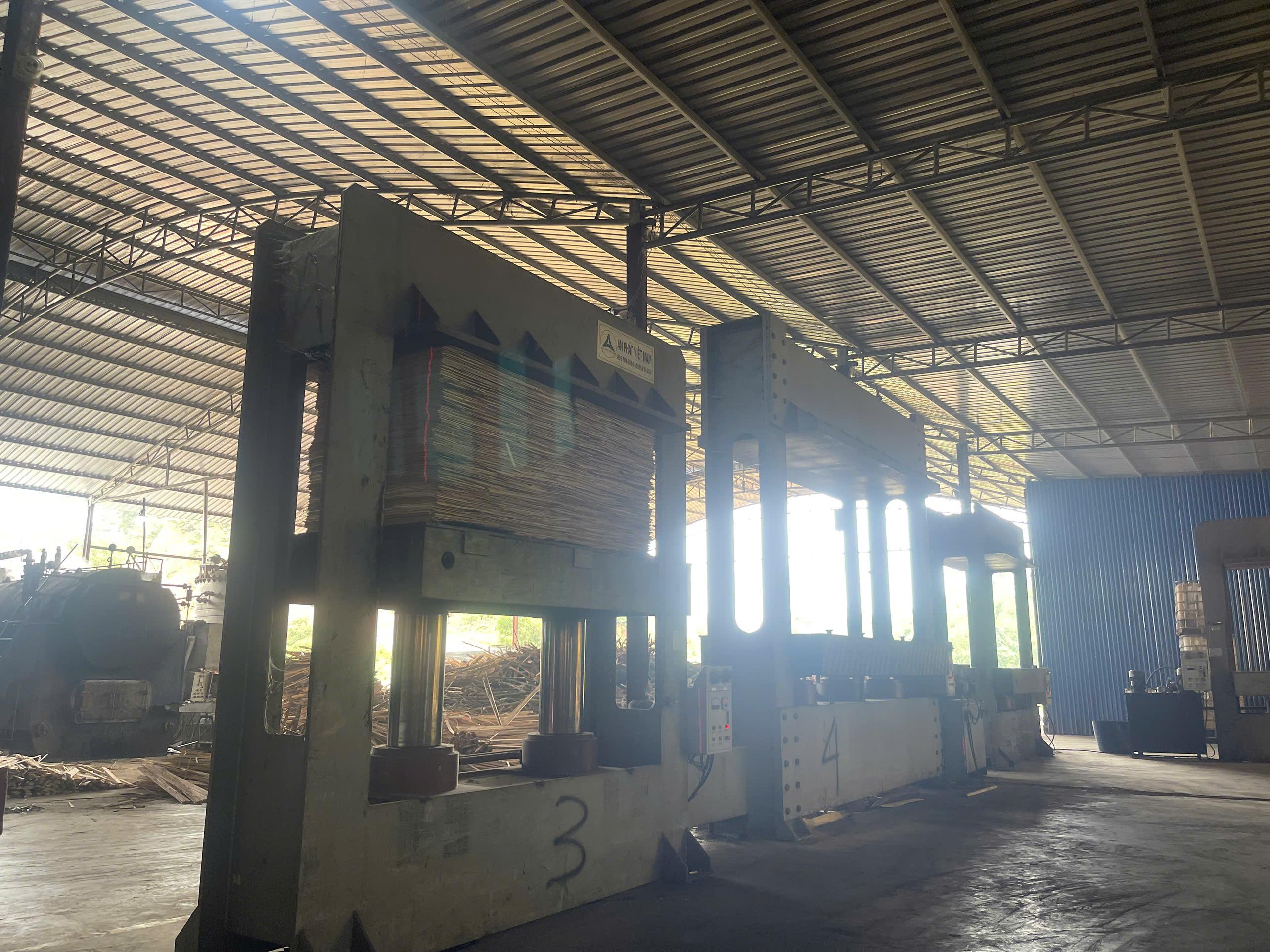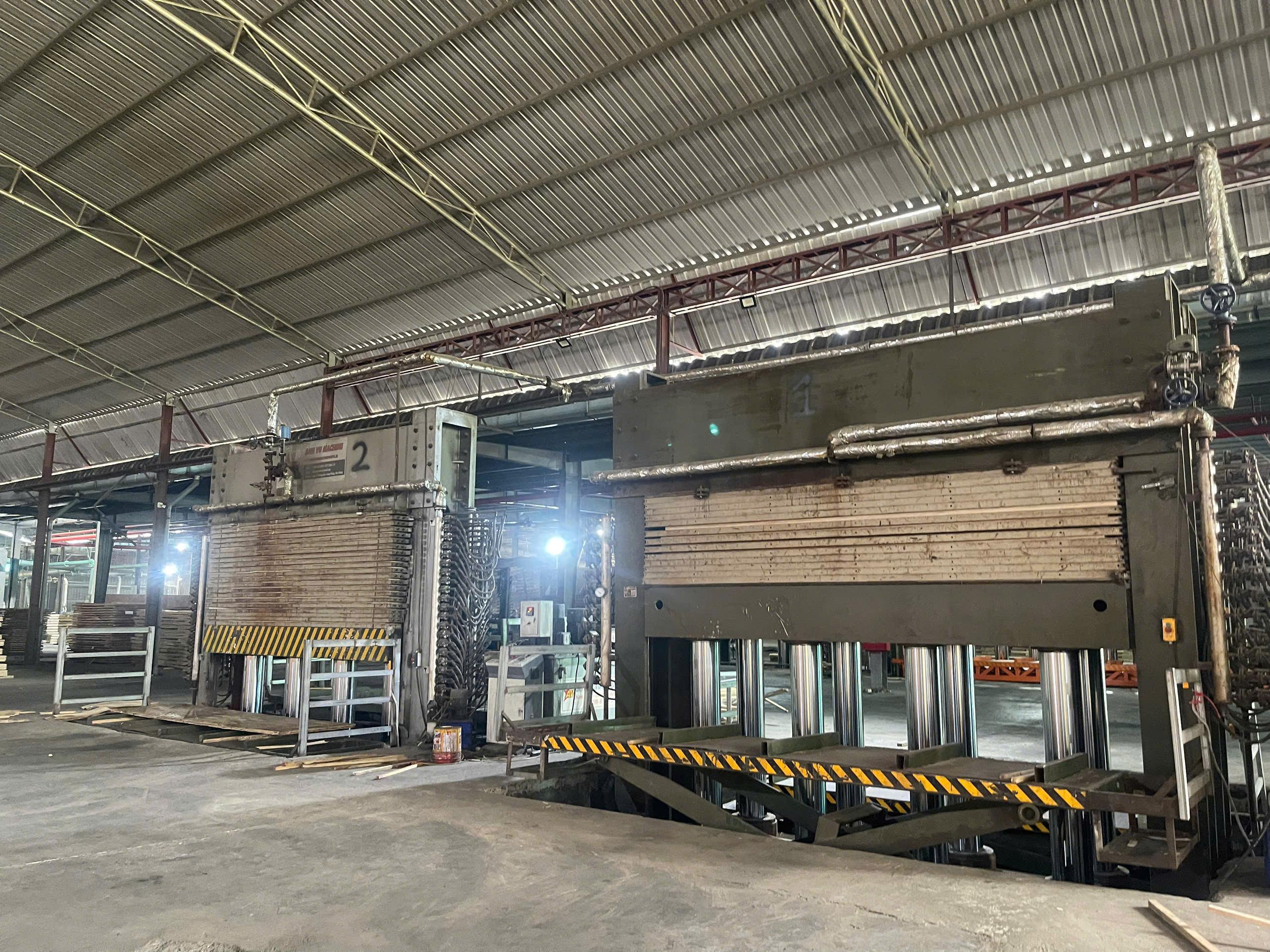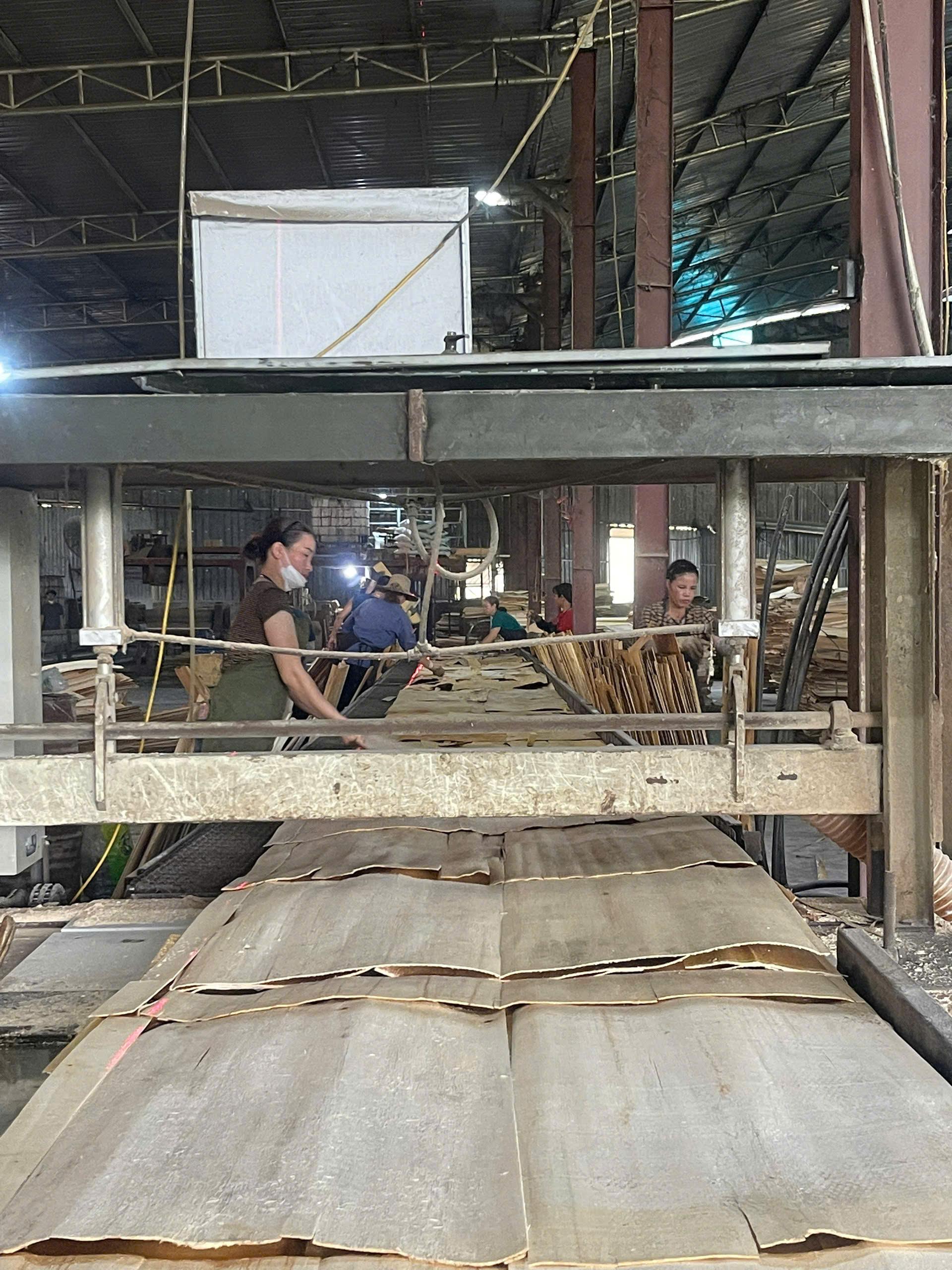English
1. PLYWOOD PRODUCTION FACTORY
- The plywood production workshop must meet technical and safety standards during operation.
- The workshop is spacious and solid to ensure the production process is continuous in all weather conditions.
- The areas are clearly divided to ensure the production of high quality plywood.
- The closed production line from input materials to the final product.
2. TYPES OF MACHINES
- Slicing machine
- Dryer
- Hot press
- Cold press
- Automatic board stacking line
- Trimming and sanding machine
- Types of plywood production machines
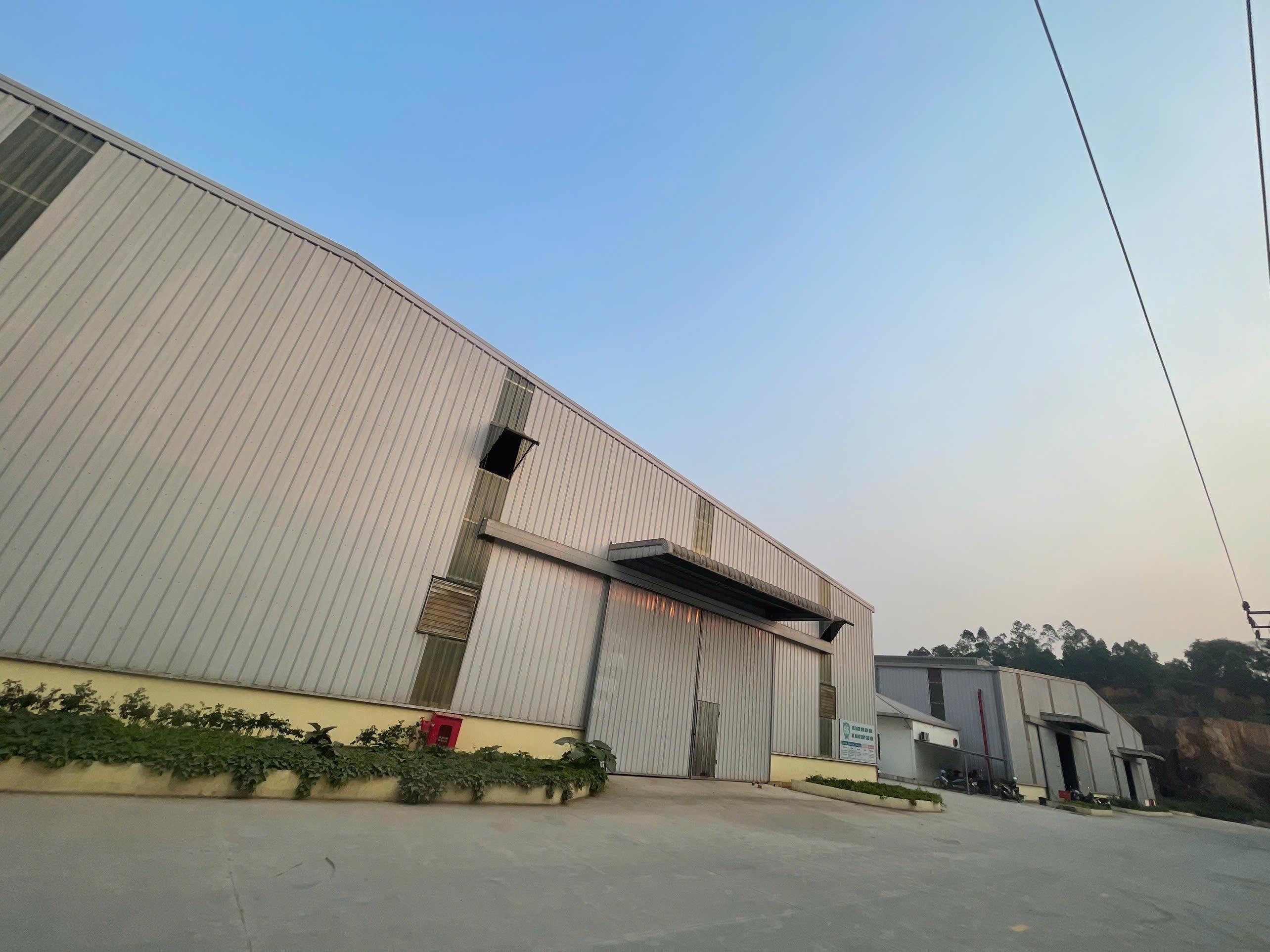
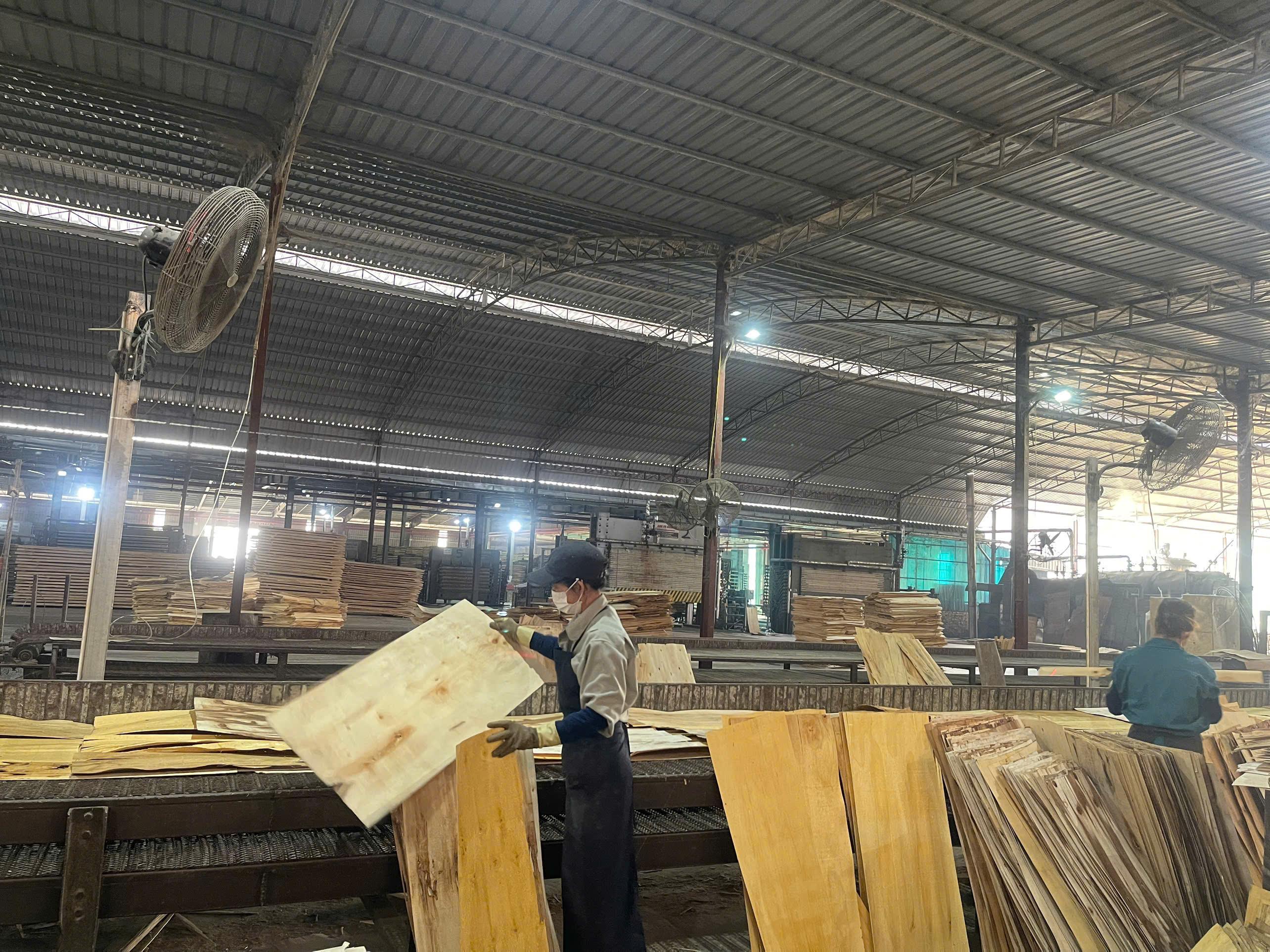
3. PLYWOOD PRODUCTION PROCESS
The plywood production process usually has 3 main stages, which are:
Stage 1: Harvesting wood
* Selecting suitable trees (broadleaf or coniferous)
* Using a cutting machine, take the trunk, remove branches and leaves, then transport to the factory for processing
* Harvesting wood for plywood production
Stage 2: Wood processing
Stage 3: Plywood production
Classifying and packaging plywood
After completing the 3 stages, the plywood will be packaged according to regulations and stored in the warehouse or distributed to the necessary place.
4. PLYWOOD PRODUCTION STANDARDS
- After being dried, the thin wood panels are stored for at least 24 hours and kept at a humidity of 6-8%
- Choose the right glue. Commonly used glues are protein glue, Urea-formaldehyde glue and Phenol-formaldehyde glue
- Pressure conditions must meet standards
- The plywood pressing process is strict and in the right order.
